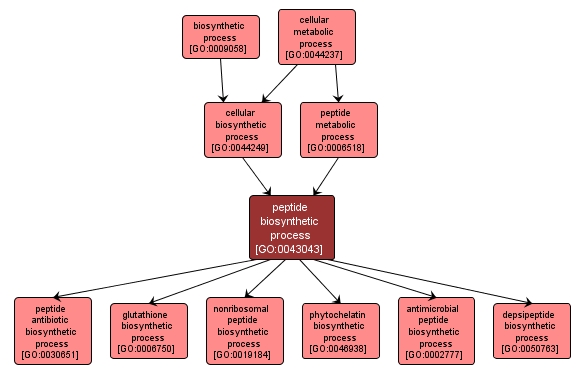| Desc: |
The chemical reactions and pathways resulting in the formation of peptides, compounds of 2 or more (but usually less than 100) amino acids where the alpha carboxyl group of one is bound to the alpha amino group of another. This may include the translation of a precursor protein and its subsequent processing into a functional peptide. |














